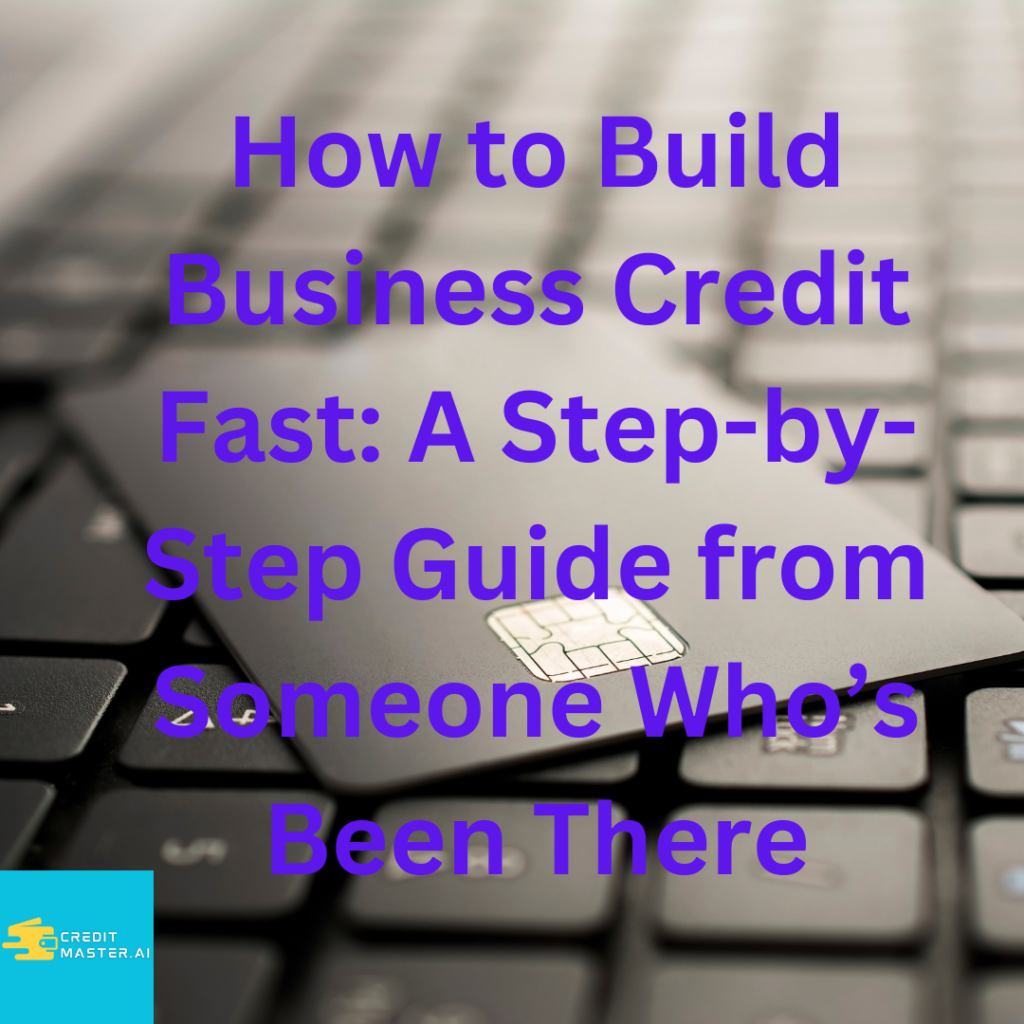Alright, let’s talk about building business credit—fast. And not in that “overnight success” way you see on YouTube, where some guy in a rented Lamborghini tells you to buy a shelf company (don’t do that). I mean real, sustainable credit that’ll make banks love you and open the doors to high-limit business credit cards, loans, and supplier deals.
I’ve been down this road. I’ve made the mistakes (trust me, I’ve made all the mistakes), and I’ve also figured out what works. So, let’s break this down like we’re having coffee, and I’m giving you the real scoop.
Step 1: Make Your Business Look Legit (Because It Has to Be)
First things first—if your business still looks like a side hustle, lenders aren’t going to take you seriously. You need to set up the proper structure:
✔ Form an LLC or Corporation – Sole proprietorships don’t build separate business credit, so you need a legal entity.
✔ Get an EIN (Employer Identification Number) – Think of it like a Social Security number, but for your business. The IRS gives these out for free (don’t fall for the scam sites charging for them).
✔ Open a Business Bank Account – Do not run your business through your personal checking account. Not only does this look unprofessional, but it also makes tax season a nightmare.
✔ Get a Business Address & Phone Number – A P.O. box won’t cut it. If you work from home, consider a virtual office address. And yes, you need a separate phone number (Google Voice works).
✔ Register with Dun & Bradstreet – This is where your DUNS number comes in. It’s free and essential for getting vendor credit.
Boom. You now exist in the business world. Let’s move on.

Step 2: Get Credit That Reports to Business Bureaus
Personal credit is easy—get a credit card, use it, pay it off, repeat. Business credit? Different beast. Not all credit sources report to business credit bureaus like Dun & Bradstreet, Experian Business, and Equifax Business. If they don’t report, it’s like lifting weights but never actually gaining muscle.
Here’s where to start:
✔ Net-30 Vendor Accounts – These are suppliers that let you buy now and pay in 30 days. Good starter accounts include:
Quill (office supplies)
Grainger (industrial supplies)
Uline (shipping & packing supplies)
Use them, pay on time, and they’ll report to the business credit bureaus.
✔ Secured Business Credit Card – If you’re just starting out, some banks offer secured business credit cards that report to credit agencies. It’s like training wheels for your credit score.
✔ Gas Cards & Store Cards – Think Shell, BP, Staples, Office Depot. Easier approvals, and they help build history.
Step 3: Keep Your Business Credit Profile Clean
Now that you have credit, the key is not screwing it up. Business credit works a bit differently than personal credit:
✔ Pay Early, Not Just on Time – Unlike personal credit (where “on-time” is good enough), business credit scores reward early payments.
✔ Keep Utilization Low – If you get a $10,000 business credit card, don’t max it out. Keep usage under 30% (better yet, under 10%).
✔ Monitor Your Credit Reports – Check your business credit reports at least once a month. Mistakes happen, and disputing errors early can save you headaches.
Step 4: Graduate to Revolving Business Credit
Once you’ve got at least three trade lines reporting, it’s time for real business credit cards (the ones that don’t need a personal guarantee). Some of the best options:
✔ Capital One Spark Business – Great starter card, but they do check personal credit.
✔ Brex Card – No personal guarantee required, but your business needs solid revenue.
✔ American Express Business Gold or Platinum – High limits, rewards, and excellent reputation.
These cards will unlock actual buying power for your business.
Step 5: Scale Up with Bank Loans & Lines of Credit
At this point, you’re no longer a rookie. Now, banks will actually want to lend to you. Options include:
✔ Business Line of Credit – Works like a credit card but with better rates. Chase, Bank of America, and Wells Fargo offer solid options.
✔ SBA Loans – The Small Business Administration (SBA) doesn’t lend directly but guarantees loans from banks, making them easier to get.
✔ Equipment Financing – Need a new work truck, camera gear, or industrial equipment? Lenders will front the cost if you have good business credit.
Final Thoughts: Be Patient, Stay Disciplined
Building business credit fast doesn’t mean instantly—but within 6-12 months, you can go from zero to having credit lines in the tens of thousands. The key? Consistency. Pay on time, use credit wisely, and never stop monitoring your reports. I’ve seen people go from no credit to $100K in business funding in a year just by following this process. No gimmicks, no shortcuts—just playing the game the right way.
Now, go get that funding. Your business deserves it.
